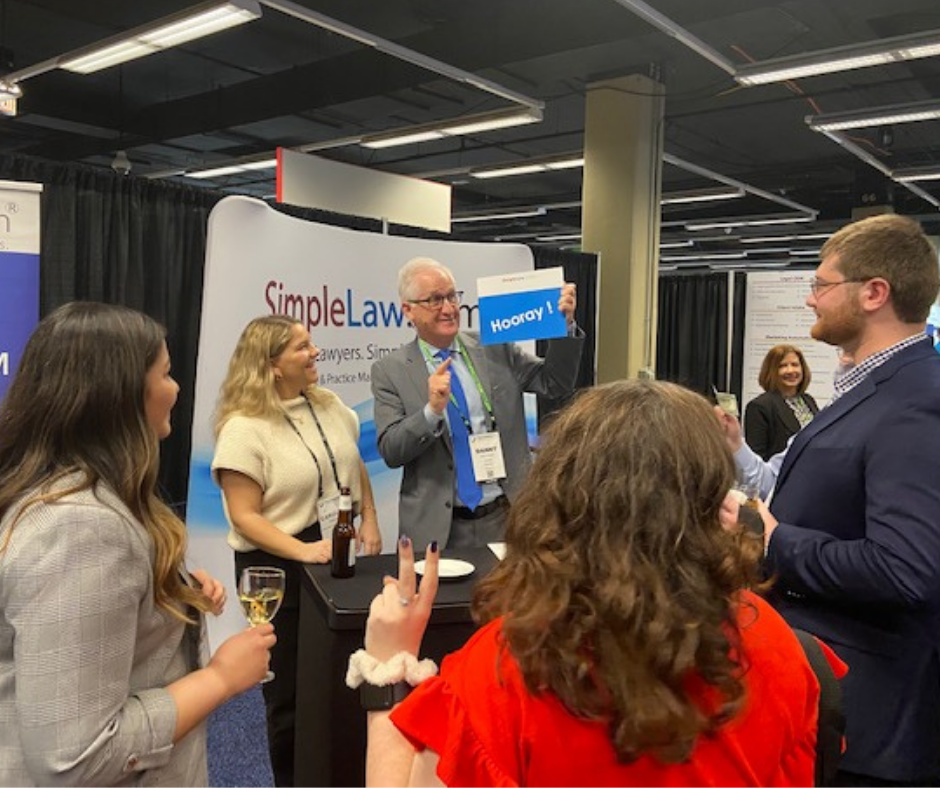Behind The Scenes In Legal Tech
It's a rather interesting experience working in case management software when your spouse is a software developer. No, my spouse does not work for the same company. He works in the financial services industry. But with the shutdown of offices, we are both working from home. It's been a real eye-opening experience for me. I know how hard our team works to ensure the best possible case management software platform. But I guess I didn't realize the level of work and the absolute detail that is required to produce something so great. So, as we prepare to roll out another set of enhancements to SimpleLaw, here is a peek behind the scenes.
Start With The End In Mind
For SimpleLaw, 99% of the enhancements we add are suggestions from users. And that's a real number, folks. One of our users, a bankruptcy attorney, asked us for a set of custom fields for time tracking and reporting. So, the sales and marketing team looked into the requirements for bankruptcy court and found that yes, it would make the process more simple for our users. The recommendation went to the tech team and they implemented it. Within 5 business days. To say the least, our users are delighted.
That's just one example. The point of this particular story is that to have great case management software that addresses the needs of the user, you have to listen to the user. No, not every suggestion is a winner. Some are preference versus true functionality needs. But the reality is our users know what they need. We just need to listen. And then build it.
If it makes sense from a functionality perspective and the outcome makes case management more simple, it's a good idea. We add that to our list of tech enhancements. But the details are important too.
Get A Great Understanding
In the example above, it sounds pretty clear-cut, right? Custom fields can mean almost anything. Are they text only? Is there ever a reason the field would require numbers? What about both? Will the accompanying data need to be sorted by the custom field? Is there a limit to the character length? These are just some examples of the detail that is required just about the fields themselves. From there, it's about control of those fields. If the fields are set at the law firm level, who sets them and who can change them matters. You get the idea.
We rely on our users to give us their recommendations. The more questions we get answered by the people who will actually use the functionality the better. Now, we always build with flexibility in mind. Some things are set in stone like every case must have a unique identification. But some things, like time tracking categories, can vary from practice to practice. The key is to understand the ultimate functionality but allow for individual law firm implementation.
Build It Securely
Data security is a big deal. Always has been. Always will be. Keeping up with the latest in data security is key. And that starts from building each enhancement or functional feature of case management software. This is a pretty technical thing and not something I'm going to go into here but suffice it to say, as I watch my spouse write his code, it starts with the very first piece of code. And it's critical throughout the process.
Make It Intuitive
It can be the best thing since sliced bread but if you can't use it or if there is a big learning curve to understand it, it's just not great. Now, not every person finds the same things intuitive. I love my iPhone. I can't seem to figure out my sister's Android. It's just not intuitive for me. But that's why it's great that there are so many options in case management software. Once you find your definition of intuitive, build the enhancements to work in a similar way. It has to be consistent with the rest of the platform and how it defines intuitive.
Test, Test, Test
Once our team creates the feature, our team does everything we can think of to try to break it. We try coming at it from various approaches, not just the way it was created to function. We enter data we know isn't allowed in that field. You get the idea. We try to break it.
If it breaks, they go back to the beginning. If we can't break it, but we see things that need to be reconsidered, it goes back. Once it passes all of our tests, we roll it out to 'production', that's the live platform, not the 'test environment'. It's officially live.
Back To The Beginning
And then, it's in the hands of our users. From there, they let us know how it's going. Is it working the way they want it to? Do they see any things that could make it better? You get the idea. The loop starts again, with listening to our users.
Whether it's an adjustment to an enhancement we recently rolled out or a new idea or feature altogether, we listen to the users. And the cycle starts again.
Of course, there are things the tech team needs to do that are purely technical in nature. I see my spouse dealing with a lot of that stuff. I don't always understand the technical side but I know it's critical. And our team does that, too.
For us, the process is all about listening to our users. And acting on it. What enhancements do you want to see in your case management software?


